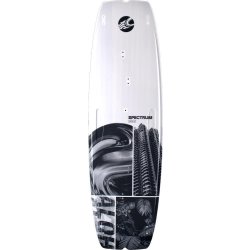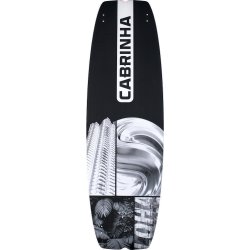
Your twintip beginner online shop
Getting started in kitesurfing with the right kiteboard can indeed be challenging. We understand that you may not be sure which is the best beginner kiteboard for you. For this reason, we have already made a careful selection of beginner kiteboards for you on this page. Every renowned kitesurfing brand offers a suitable twin-tip kiteboard for kitesurfing beginners, and we have a variety of these boards from different brands in our online shop.
To help you decide, we've put together a selection of beginner kiteboards that are designed for their beginner-friendliness and fast progression capabilities. If you want to find out more about kiteboards for beginners or have specific questions, you've come to the right place. Our team will be happy to help you choose the perfect beginner kiteboard for a successful start to kitesurfing.
Check our Twintip buyers guide. Click here!
As a beginner, you usually start with a twintip, a kiteboard with a symmetrical shape that allows you to ride with both your left and right leg in front. Three main factors make a kiteboard beginner-friendly: the rocker, the flex and the size of the twintip kiteboard.
The rocker, the bulge of the kiteboard, is particularly important for beginners. A beginner kiteboard should have little rocker. A low rocker allows the majority of the kiteboard to touch the water, which makes it easier to gain speed. Flat kiteboards with little rocker also lie low in the water with the fins, which makes it easier to ride upwind. Examples of kiteboards with little rocker are the North Prime and the Duotone Gonzales.
The flex, i.e. the flexibility of the kiteboard, is also crucial. A beginner kiteboard should have a lot of flex to absorb hard impacts and offer a comfortable ride. Kiteboards such as the F-One Trax HRD and the Cabrinha Ace Hybrid are characterised by a lot of flex.
The size of the kiteboard mainly depends on your weight. The heavier the rider, the larger the kiteboard should be. The right size ensures easier learning and an improved riding experience.
Almost all kiteboards are built with a wooden core, as this is strong and offers sufficient flex, which makes for a comfortable ride. The wood core provides good feedback when riding and offers a solid pop. Freeride kiteboards in particular are often equipped with a wooden core. However, there are also kiteboards with a carbon core.
A carbon layer over the wooden core saves weight, as carbon is lighter than fibreglass. The advantage of carbon is that it offers a more direct feel and a more explosive pop. The carbon construction creates a springboard effect, which means that you are briefly catapulted into the air when you push off. This is particularly popular with advanced riders.
However, a carbon construction may not be ideal for beginners, as it is somewhat stiffer and offers less comfort. A wooden core is often better suited to the needs of a beginner kiter.
If you are unsure and would like advice on which kiteboard for beginners suits you best, don't hesitate to contact us. We will be happy to help you choose the ideal kiteboard for a successful start to kitesurfing.
Choosing the right size for a beginner kiteboard is a frequently asked question. A kiteboard has both a length and a width. Most brands offer kiteboards with lengths of around 130 cm to 150 cm and widths of around 28 cm to 48 cm. The width of the kiteboard must always be in proportion to the length, and manufacturers usually take this into account so you don't have to worry about it.
If a kiteboard is too narrow, it will lie too low in the water, which means you will need more kite power to enjoy your session. The kiteboard will also feel very unstable. On the other hand, a kiteboard that is too big feels bulky and is difficult to handle, especially once you get going.
As a rough guide: an advanced kitesurfer weighing around 80 kg could use a twintip of around 138 cm, for example. As a beginner, however, you can easily choose a size larger. A slightly larger kiteboard offers more surface area and therefore more lift. This additional buoyancy makes it easier to paddle up to speed. In addition, the kiteboard feels comfortable and stable, which makes the learning process easier.
If you have any further questions or need more specific information, feel free to contact us via live chat. We will be happy to help you choose the perfect kiteboard for a successful start to kitesurfing.

